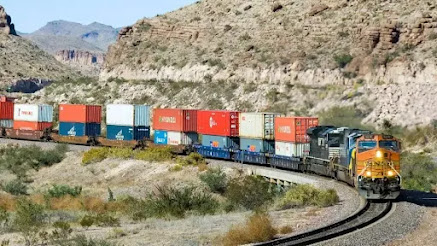A Deep Dive Into the Advantages and Challenges of |Rail Freight|
Advantages of Rail Freight
High Capacity and Efficiency:
Trains have the ability to carry large quantities of cargo in a single trip, making rail freight highly efficient for bulk goods like coal, minerals, and agricultural products. This can help reduce shipping costs per unit of goods.
Energy Efficiency:
Trains are more energy-efficient compared to trucks when transporting heavy or bulky goods over long distances. This can lead to lower greenhouse gas emissions per ton-mile of transported goods.
Reduced Traffic Congestion:
Rail freight reduces the number of trucks on the road, which can alleviate traffic congestion and reduce wear and tear on road infrastructure.
Long-Distance Transport:
Rail freight is particularly well-suited for long-distance transport between major cities and ports. It provides a reliable and consistent mode of transportation, especially for intercontinental shipments.
Lower Fuel Consumption:
Trains have a lower fuel consumption per ton of cargo transported compared to trucks. This contributes to both cost savings and environmental benefits.
Predictable Scheduling:
Rail freight schedules are generally more predictable and less susceptible to weather-related delays compared to road freight.
Reduced Accidents:
Rail freight is statistically safer than road freight, as trains are less prone to accidents and collisions. This can lead to reduced risks for both cargo and personnel
Less Labor-Intensive:
Once a train is loaded and in motion, it requires less labor to operate and monitor compared to multiple truck deliveries.
Challenges of Rail Freight
Limited Accessibility:
Rail networks may not reach every destination, especially rural and remote areas, limiting the door-to-door service capability of rail freight.
Transshipment and Intermodal Challenges:
In many cases, goods need to be transferred from trains to trucks or other modes of transportation for the final delivery, which can introduce delays and additional costs.
Infrastructure Maintenance:
Rail infrastructure requires consistent maintenance to ensure safe and efficient operations. This can be costly and time-consuming.
Fixed Routes and Networks:
Trains are restricted to existing rail networks and routes, which may not be flexible enough to accommodate specific shipping needs.
Capital Intensive:
Establishing and maintaining rail infrastructure requires significant investment, making it challenging for new players to enter the market.
Lack of Last-Mile Connectivity:
Rail freight often struggles with the "last mile" problem – getting goods from the rail terminal to their final destination. This can limit the door-to-door convenience that road freight provides.
Competition from Other Modes:
Trucks and air cargo can be more flexible for shorter distances and time-sensitive deliveries, posing competition to rail freight.
Regulatory and Political Challenges:
The rail industry is subject to regulatory and political influences that can impact operations and investment decisions.
In conclusion,
Rail freight offers several advantages, including high capacity, energy efficiency, and reduced traffic congestion. It's particularly well-suited for long-distance transport of bulk goods. However, challenges such as limited accessibility, infrastructure maintenance, and the need for intermodal coordination can hinder its effectiveness. To fully harness the benefits of rail freight, investments in infrastructure, improvements in intermodal connectivity, and regulatory support are crucial.
.jpg)




.jpg)
No comments:
Post a Comment